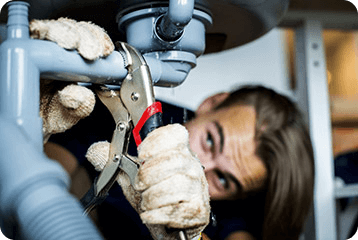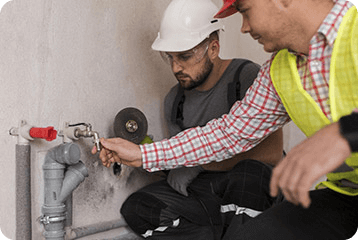Sewer Camera Inspection
Sewer Camera Inspection in Ellicott City, MD
Call Heil Plumbing for a reliable assessment today.

Inspection services for savvy homeowners — and buyers
Get peace of mind as a homeowner — or buyer — with a sewer camera inspection in Ellicott City, MD. Our service is designed to detect costly plumbing problems before they emerge.
Stay one step ahead of any subterranean issues by hiring an expert to thoroughly examine your sewer line.
How does a sewer camera inspection work?
Uncover concealed plumbing problems lurking in your sewage system with a sewer camera inspection in Ellicott City. Our specialists will pinpoint any infrastructure damage and suggest an effective remedy to correct the problem.
Here’s our process:
1
We’ll submerge a camera system into your sewer line, allowing for a clear view of the interior.
2
We’ll analyze the footage and identify any hidden structural issues that could lead to plumbing issues.
3
We’ll recommend a practical solution that will save you money in the long run.
Do I really need a sewer camera inspection?
Did you know slow-draining plumbing could be a sign of sewer line damage? If you detect any of the following, a sewer video inspection in Ellicott City will help you get in front of significant plumbing issues:

Will a sewer camera inspection in Ellicott City solve my problem?
Sewer camera inspection in Ellicott City is a proactive way to protect your plumbing by identifying internal damage. However, sewer cameras aren’t foolproof because they can’t spot external issues.
Our team will analyze your sewer line and suggest the best course of action, whether it’s further inspection, drain cleaning, or sewer line repair in Ellicott City.



Get your sewer line — and your home — back to normal.
Secure the tranquility of your home with a sewer video assessment in Ellicott City. With over 40 years of expertise, we’ll provide exceptional support and assistance throughout the entire process.
Contact a plumber in Ellicott City, MD for a professional sewer camera inspection.
Are you in the Charm City area? Our plumbers in Baltimore County will thoroughly assess and fix your sewer problem.
Live closer to D.C.? Connect with a plumber in Montgomery County to get your sewer line in working order.













